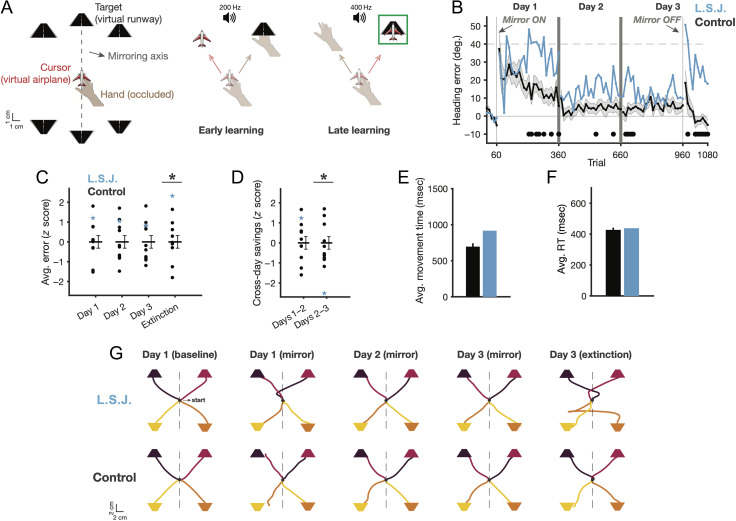Figure 2. .
Mirror reversal learning. (A) Participants brought a visual cursor (virtual airplane) to a target (virtual runway) as a cover task for a motor learning experiment. Task design (left): Early in the task, the hand is directed toward the target resulting in large errors (center), whereas late in training, the hand should be directed toward the mirror solution direction (right). Target misses were signaled by a low-pitched tone; target hits were signaled by a high-pitched tone and a green border. (B) Learning curves, in eight trial bins. The line at 40° error represents the result of a reach straight to a target during the mirror trials. Black dots mark where L. S. J. has an error bin of z > 1.64 (p < .05) relative to controls. Error shading = 1 SEM. (C) Z score average error on each day and in the extinction block and (D) on the first two bins at the end of Day n and the beginning of Day n + 1. Error bars = 1 SEM. (E–F) Average (median) movement times and RTs during mirror blocks. (G) Average reach trajectories, aligned to peak speed. Target/trajectory colors are matched to depict trials associated with each specific target; center line is for mirroring axis illustration (i.e., not visible to the participant; central baseline targets not shown).

